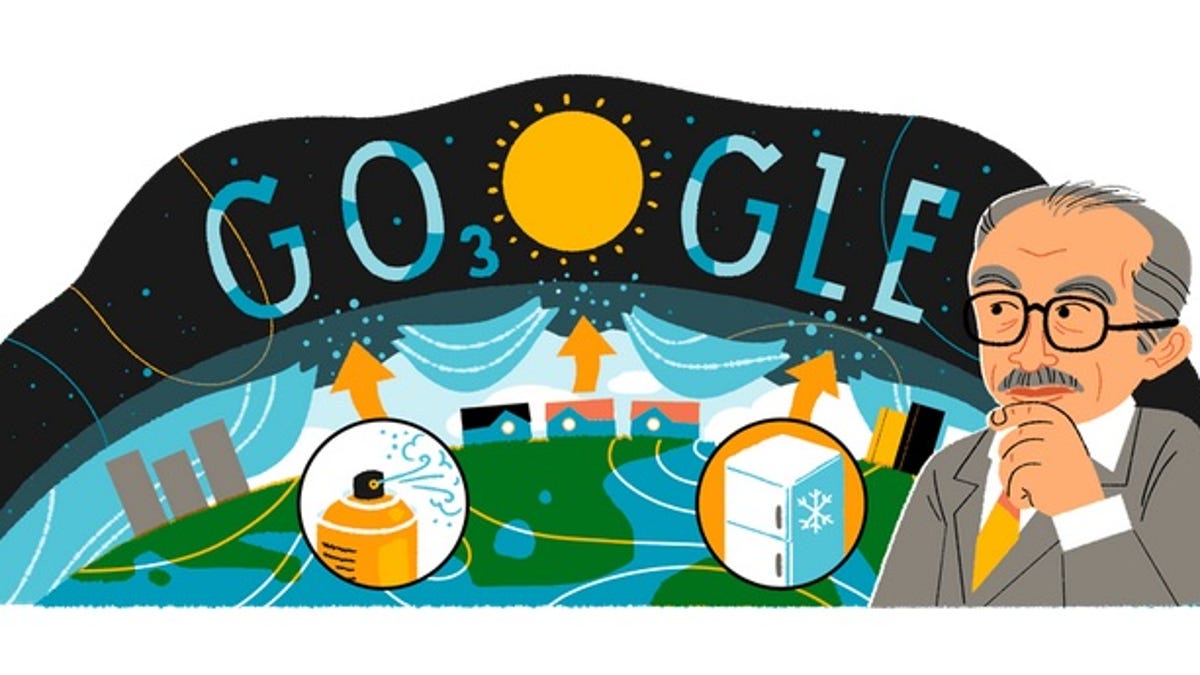
For years, the chemicals used in hair spray and refrigerators wreaked havoc on the ozone layer, the protective shroud that shields us from the sun’s harmful ultraviolet radiation. But it wasn’t until 1974 that people started to take notice.
That was the year that Mexican scientist Mario Molina published a research paper that showed chlorofluorocarbons — widely used in refrigerator coolants, spray paint, deodorant sprays and other aerosol products — were depleting the ozone layer. The consequences were dire, for without the ozone layer to help protect us from the sun, our planet wouldn’t be habitable. His research helped change global environmental policy.
To honor Molina’s pioneering efforts to combat an environmental disaster, Google dedicated its Doodle to Molina on the Nobel Prize-winning scientist’s 80th birthday.
Born on March 19, 1943, in Mexico City, Molina was drawn to science at a young age, converting a bathroom in his home into a makeshift laboratory for his chemistry sets.
“I was already fascinated by science before entering high school,” Molina wrote in a biography on the Nobel site. “I still remember my excitement when I first glanced at paramecia and amoebae through a rather primitive toy microscope.”
After being sent to a Swiss boarding school at the age of 11, Molina returned to Mexico to study chemical engineering program at the National Autonomous University of Mexico before earning a doctorate in physical chemistry from the University of California, Berkeley, in 1972.
A year later, while working with F. Sherwood Rowland of the University of California at Irvine, Molina found that CFCs in the upper atmosphere could be broken down by ultraviolet radiation, releasing chlorine atoms, which destroy ozone molecules. Their findings were published in the journal Nature in 1974.
Their findings were denounced by industries that rely on CFCs, with one company’s executive alleging that the pair’s theory was “orchestrated by the Ministry of Disinformation of the KGB.” But in 1985, British researchers discovered a massive hole in the ozone layer over Antarctica.
Those finding led governments around the world to come together in the 1980s and sign a treaty called the Montreal Protocol in order to phase out the use of ozone-damaging substances. Science magazine called the accord as “the most successful international effort to fight climate change and environmental degradation.”
For their work, Molina and Rowland shared 1995 Noble Prize for Chemistry with Paul J. Crutzen of the Max Planck Institute in Germany. In announcing the award, the Royal Swedish Academy of Sciences said “the three researchers have contributed to our salvation from a global environmental problem that could have catastrophic consequences.”
In 2013, President Barack Obama awarded Molina with the Presidential Medal of Freedom, the highest civilian honor in the US.
Molina died of a heart attack in 2020 at the age of 77.
